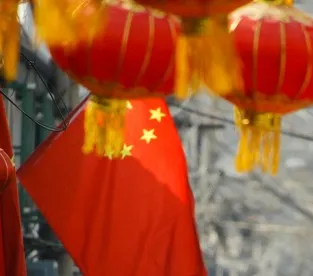In light of recently released Chinese patent statistics showing at least eight to 10 months to first office action and an average of 22.7 months to final disposition from the date of filing,[1] applicants may wish to accelerate examination of their patent applications.
However, unlike the multitudes of routes for accelerating patent prosecution in the United States, China has two main programs to accelerate patent prosecution: the Patent Prosecution Highway[2] and prioritized examination.[3]
Both programs are free to participate in and prioritized exam will yield a first office action within 45 days of approval and final disposition within a year.[4] Similarly, the PPH generates a first office action within one to three months and final disposition in an average of 11.9 months from the date of PPH approval.[5] Additional strategies can be employed to further accelerate patent prosecution in combination with one of these programs or in lieu of them.
Patent Prosecution Highway
The PPH allows for expedited examination of a Chinese application when a corresponding application in a participating patent office has at least one allowable/patentable claim. China has a number of signed agreements with various patent offices and one needs not be a resident of the country of the corresponding patent office. For example, an American applicant with an allowed Norwegian patent application can request to participate in the PPH in China based on the Norwegian patent application.[6]
However, for most applicants, the PPH agreement with the IP5 will be relevant. The PPH IP5 program covers five patent offices including the European Patent Office, the Japanese Patent Office, the Korean Intellectual Property Office, the China National Intellectual Property Administration and the U.S. Patent and Trademark Office. The IP5 program was launched on Jan. 6, 2014, has been extended to Jan. 5, 2023.[7]
Requirements
• A Chinese application must share a priority date or filing date with an application in another participating patent office and must claim priority to the application or share a common priority.
• At least one claim in the corresponding application indicated to be patentable/allowable.
• All claims in the Chinese application must sufficiently correspond to an allowed claim in the corresponding application. All Chinese claims must have same or similar scope to the allowed claims or be narrower than the allowed claims.
• Timing: The Chinese application must be published; the Chinese application must have entered substantive examination (but applicants can request the PPH when filing a request for substantive examination); and CNIPA must have not begun examination of the Chinese application.
• The application must be an electronic patent application.[8]
To ensure correspondence, applicants must remain cognizant of the limited time periods available to voluntarily amend the Chinese application. Applicants can only voluntarily amend invention patent applications when requesting examination and within three months of receiving a notice of entering substantive examination. Accordingly, if an applicant has not amended Chinese claims to match allowable claims in a corresponding application during these time periods, the applicant may not be able to participate in the PPH program.
Documents Required to Participate
• Copies of all office actions with translations to English or Chinese.
• Copies of all claims found to be allowable with translations to English or Chinese.
• Copies of all nonpatent literature cited in the corresponding application used in any rejection (translations not required).
• A table showing how the Chinese claims correspond with the allowable claims. The Chinese claims can be the same or narrower, e.g., by adding an additional limitation.[9]
Note, when translations are required, CNIPA will accept machine translations.
Administrative Measures for Patent Priority Examination
These measures allow for expedited examination of patent applications under specific conditions such as type of technology, infringement, implementation by applicant, foreign filing, and the national or public interest. While this program is geared toward Chinese applicants,[10] non-Chinese applicants can also participate.[11]
Requirements
• The patent application must involve national key development industries such as energy conservation and environmental protection, new generation information technology, biology, high-end equipment manufacturing, new energy, new materials, new energy vehicles, and smart manufacturing;
• The patent application must involve industries encouraged by the provincial and district-level municipal governments;
• The patent application must involve the internet, big data, cloud computing and other fields and the technology or product obsolescence is fast;
• The patent applicant must have made preparations for implementation or has begun implementation, or there is evidence that others are implementing their inventions;
• The patent application was first filed in China and then filed in a foreign country; or
• Of great significance to national interests or public interests and need to be reviewed quickly.[12]
Documents Required to Participate
• Priority exam request;
• Prior art (except if based on foreign filing);
• Proof of meeting the requirements; and
• Approval by state council or provincial IP office. However, as the U.S. does not have any provincial Chinese IP offices, an applicant’s Chinese law firm can have the local IP office generate an approval. For example, Beijing-based law firms can contact the ZhongGuanCun IP Promotion Bureau for approval for non-Chinese applicants.[13] However, some local IP offices may be less than receptive than others requiring changing to a law firm in a more receptive location.[14]
Once approved, CNIPA will issue a first office action within 45 days and conclude examination within one year. Note, there are no timing issues affecting when one can apply, so priority examination is a good option when the PPH is not available.
Intellectual Property Rapid Protection Centers
China has established a number of centers in industrial clusters that can provide rapid examination for the technology the cluster is focused on. For example, Zhongshan for lighting, Nantong for home textiles, Hangzhou for pens, Jingdezhen for ceramics, and Dongguan for furniture.[15]
Other Measures to Speed Prosecution
In addition to the measures above, applicants should request substantive examination early. Applicants can file for examination up to 36 months from the earliest priority date,[16] which can significantly delay examination and grant. Further, applicants should amend their Chinese applications to match prosecution amendments made in a parent application to avoid duplicate rejections in China based on rejections made in the parent. Finally, applicants should ensure to amend claims for Chinese formalities to avoid getting a rejection for same after prosecution on the merits has closed.
Conclusion
In conclusion, applicants can speed their applications through examination by CNIPA by using the above measures. However, applicants need to be cognizant of the time limits if interested in taking advantage of the PPH. Further, non-Chinese applicants may receive pushback from their Chinese firms in using prioritized examination as the firms may not be familiar with the measures or believe the measures are only for Chinese applicants.
This article was co-authored by Lei (Ricky) Tan the patent consultant at Pujing Chemical Industry Co. Ltd. in Shanghai.
[1] http://ip.people.com.cn/n1/2019/0710/c179663-31225443.html
[2]http://english.sipo.gov.cn/specialtopic/patentprosecutionhighway/index.htm
[3] http://www.sipo.gov.cn/zcfg/zcfgflfg/flfgzl/zlbmgz/1020137.htm
[4] Article 10 of the Administrative Measures for Patent Priority Examination (2017) (Bureau
Order No. 76).
[5] http://www.iprdaily.cn/article1_23393_20191211.html
[6]http://english.sipo.gov.cn/specialtopic/patentprosecutionhighway/pphnews/1146918.htm
[7]http://english.sipo.gov.cn/specialtopic/patentprosecutionhighway/pphnews/1145052.htm
[8]http://english.sipo.gov.cn/specialtopic/pph/pphfiles/201604/P020160425497330875436.pdf
[9] Id.
[10] Article 1 of the Measures reads, “In order to promote… the construction of a strong intellectual property country.”
[11] The authors have called CNIPA on April 8, 2020, and confirmed non-Chinese applicants can participate.
[12] http://www.sipo.gov.cn/zcfg/zcfgflfg/flfgzl/zlbmgz/1020137.htm
[13] The authors have called the Bureau on April 9th, 2020 and confirmed the Bureau will grant approval to non-Chinese applicants if they meet the requirements.
[14] For example, the Shanghai Intellectual Property Administration will only provide approvals for Shanghai applicants. http://sipa.sh.gov.cn/xxgkml/20191231/f37ea3eadbb94df599234478b7fe3de9.html?from=timeline
[15] http://www.iprdaily.cn/article_17803.html
[16] Article 35 of the Patent Law of the People’s Republic of China.



 />i
/>i

